All About Autostart Generators

It is possible to create conditions for complete energy security of a private house or industrial enterprise only by installing a generator with auto start. In the event of emergency power outages, it will spontaneously start up and supply electrical voltage to key life support systems: heating, lighting, water supply pumps, refrigerators and other especially important household technical equipment.


Peculiarities
Basically, generators with automatic start do not seem to differ in any way from the rest. Only they must have an electric starter and a bar for connecting signal wires from the ATS (automatic switching on of backup power), and the units themselves are made in a special way for correct operation from external signal sources - automatic start panels.

Advantages and disadvantages
The main advantage of these installations is that the start-up and shutdown of power plants is carried out without human intervention. Other pluses include:
- high reliability of automation;
- protection against short circuits (SC) during the operation of the unit;
- minimal support.
The reliability of the emergency power supply system is achieved by checking the automatic reserve switching system of the conditions, the compliance of which allows the start-up of the unit. These are related to:
- lack of short circuit in the operated line;
- the fact of activation of the circuit breaker;
- presence or absence of tension in the controlled area.
If any of the above conditions are not met, the command to start the motor will not be given. Speaking of shortcomings, it can be noted that electric generators with auto-start systems need special control over the condition of the battery and timely refueling. If the generator is inactive for a long time, its start should be checked.


Device
Autostart for a generator is a complex and can be installed only on those types of electric generators that are driven by an electric starter. The structure of automatic start-up is based on microelectronic programmable controllers that control the entire automation system. The integrated autorun unit also performs the duties of switching on the reserve, in other words, it is an ATS unit. In its structure there is a relay for transferring the input from the centralized electrical network to the power supply from the emergency power plant and vice versa. The signals used for control come from a controller that monitors the presence of voltage in the central power grid.
The basic set of the automatic start-up system for power plants contains:
- unit control panel;
- ATS switchboard, which includes a control and indication unit and a voltage relay;
- Battery charger.

Varieties
Aggregates with an autostart option can be grouped using the same method as for units with a manual start. As a rule, they are divided into groups according to purpose and parameters with which the unit is endowed. It is easy to understand the meaning of these specifications. First of all, you need to know which object will be powered from an additional source, in this case 2 types of installations can be distinguished:
- household;
- industrial.
Also, generators can be broken down according to such criteria.

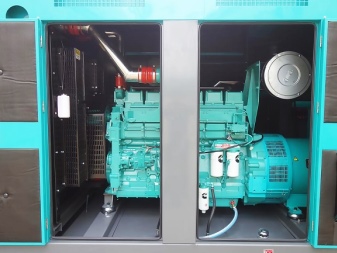
By type of fuel
Varieties:
- diesel;
- gas;
- gasoline.
There are still solid fuel types of installations, however, they are not so common. In terms of the above, each technique has its pros and cons.A diesel generator is usually more expensive than its prototypes operating on other types of fuel, does not show itself well in frost, which forces it to be placed in separate closed-type rooms. In addition, the motor is noisier.
The plus of this unit is a longer service life, the motor is less subject to wear and tear, and these generators also have a rather thrifty fuel consumption.

The gas generator is the most common and easiest to use, represented by the largest number of modifications on the market, in various price categories, which was its key advantage. The disadvantages of this unit: impressive fuel consumption, a small work resource, however, at the same time, it is most bought for economic purposes and prepared for auto start in the event of a power outage.
The gas generator is the most economical in terms of fuel consumption compared to its competitors, makes less noise and has a long service life when used correctly. The main disadvantage is the risk of working with gas and more complicated refueling. Gas units are operated mainly at production facilities, since such equipment requires highly qualified service personnel. In everyday life, gasoline and diesel generators are practiced - they are simpler and less dangerous.
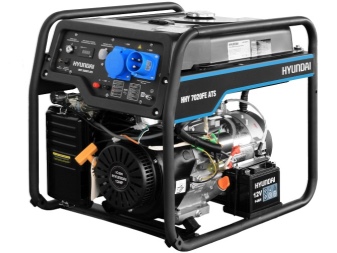

Division into synchronous and asynchronous
- Synchronous. High quality electrical power (cleaner electric current), they are easier to withstand peak overloads. Recommended for supplying capacitive and inductive loads with high starting electric currents.

- Asynchronous. Cheaper than synchronous ones, only they do not tolerate extreme overloads. Due to the simplicity of the structure, they are more resistant to short-circuit. Recommended for powering active energy consumers.

- Inverter. Lean mode of operation, produces high quality electrical energy (which makes it possible to connect equipment that is sensitive to the quality of the supplied electric current).

By phase difference
The units are single-phase (220 V) and 3-phase (380 V). Single-phase and 3-phase - different installations, they have their own characteristics and working conditions. 3-phase should be chosen if there are only 3-phase consumers (nowadays, in country houses or small industries, such are rarely found).
In addition, 3-phase modifications are distinguished by a high price and very expensive service, therefore, in the absence of 3-phase consumers, it is reasonable to buy a powerful unit with one phase.
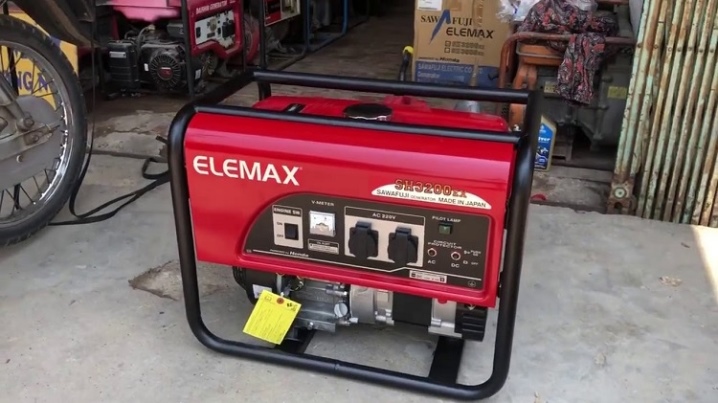
By power
Low-power (up to 5 kW), medium-power (up to 15 kW) or powerful (over 15 kW). This division is very relative. Practice shows that a unit with a maximum power in the range of up to 5-7 kW is enough to provide household electrical appliances. Organizations with a small number of consumers (mini-workshop, office, small store) can actually get by with an autonomous power plant of 10-15 kW. And only industries using powerful production equipment have a need for generating sets of 20-30 kW or more.

Manufacturers
Today the market of electric generators is distinguished by the fact that the assortment is growing at a rapid pace, which is steadily replenished with interesting innovations. Some samples, unable to withstand the competition, disappear, and the best ones gain recognition from buyers, becoming sales hits. The latter, as a rule, include samples of famous brands, however, their list is invariably supplemented by “debutants” from different countries, whose products boldly compete in terms of operational potential and quality with the authorities of the industry. In this review, we will announce the manufacturers whose units deserve the indisputable attention of both specialists and ordinary consumers.

Russia
Among the most popular domestic generators are petrol and diesel generators of the Vepr trademark with a capacity of 2 to 320 kW, designed to generate electricity in private households and in industry. Owners of country cottages, small workshops, oil industry workers and builders are in great demand for WAY-energy generators, household - with a capacity from 0.7 to 3.4 kW and half industrial from 2 to 12 kW. Industrial power stations WAY-energy have a capacity of 5.7 to 180 kW.
Among the favorites of the Russian market are units of Russian-Chinese manufacture of the Svarog and PRORAB brands. Both brands represent diesel and gasoline units for home and industrial use. The power scale of Svarog units reaches 2 kW for installations with one phase, up to 16 kW for specialized 3-phase generators of the Ergomax line. Regarding the PRORAB units, it must be said that these are very high-quality and extremely comfortable stations at home and small businesses with a capacity of 0.65 to 12 kW.

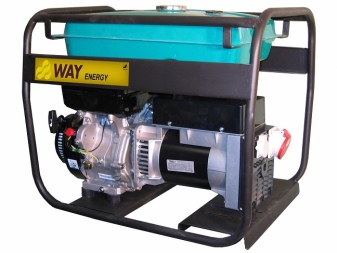
Europe
European units have the most extensive representation on the market. Most of them stand out for their high quality, productivity and efficiency. Among the repeatedly included in the top ten world ratings, which are compiled by the ratio of parameters, experts believe French SDMO units, German HAMMER and GEKO, German-Chinese HUTER, British FG Wilson, Anglo-Chinese Aiken, Spanish Gesan, Belgian Europower... Turkish Genpower generators with a capacity of 0.9 to 16 kW are almost always referred to the category of "European" ones.
The range of units under the HAMMER and GEKO brands includes gasoline and diesel generators. The power of GEKO power plants is in the range of 2.3-400 kW. Under the HAMMER trademark, domestic installations from 0.64 to 6 kW are produced, as well as industrial ones from 9 to 20 kW.
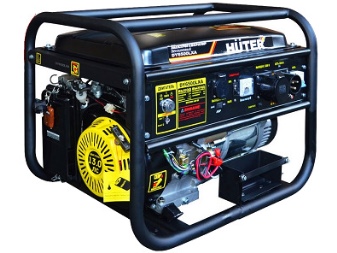

The French SDMO stations have a capacity of 5.8 to 100 kW, and the German-Chinese HUTER units from 0.6 to 12 kW.
Best-selling British FG Wilson diesel generators are available in capacities ranging from 5.5 to 1800 kW. British-Chinese Aiken generators have a power of 0.64-12 kW and belong to the category of domestic and half industrial installations. Under the Gesan trademark (Spain), stations are manufactured with a capacity from 2.2 to 1650 kW. The Belgian brand Europower is famous for its efficient home gasoline and diesel generators up to 36 kW.


USA
The market for American electric generators is mainly represented by the Mustang, Ranger and Generac brands, in addition, the first two brands are produced by Americans in tandem with China. Among the Generac samples there are small-sized household and industrial units using liquid fuel, as well as those operating on gas.
The power of Generac power plants ranges from 2.6 to 13 kW. The Ranger and Mustang brands are manufactured at the production facilities of the PRC and represent the entire line of installations in any price group, from home to container power plants (from 0.8 kW to power plants with a capacity of over 2500 kW).


Asia
Historically, high-tech and high-quality electric generators are created by the states of Asia: Japan, China and South Korea. Among the "oriental" brands, Hyundai (South Korea / China), "natural Japanese" - Elemax, Hitachi, Yamaha, Honda, KIPO electric generators manufactured by the joint Japanese-Chinese concern and a new brand from China Green Field attract the attention of themselves.
Under this brand, household power plants from 2.2 to 8 kW are produced to provide energy to household electrical appliances, construction tools, garden equipment, lighting and diesel generators from 14.5 to 85 kW.


Separately, it should be said about Japanese generators, known for their long service life, unpretentiousness, stable performance and relatively low prices due to "native" components. This includes the brands Hitachi, Yamaha, Honda, which symbolically take 3 "prize" places in demand in the market. Diesel, gas and petrol power plants of Honda are produced on the basis of the proprietary engines of the same name with power from 2 to 12 kW.
Yamaha units are represented by home gas generators with power from 2 kW and diesel power plants with a capacity of up to 16 kW. Under the Hitachi brand, units are produced for household and semi-industrial categories with a capacity of 0.95 to 12 kW.
Domestic and semi-industrial include gasoline and diesel power plants created under the Hyundai trademark at the company's plant in China.


How to choose?
Recommendations are as follows.
- Decide on the type of station. Gasoline generators are attractive due to their small size, low noise level, stable operation at low temperatures, and an extensive power spectrum. Diesel engines belong to industrial installations, therefore they are usually used in production. Gas are economical in terms of fuel consumption. Gas and petrol generators are perfect for household needs.
- Decide on the power. The indicator starts at 1 kW. For everyday life, a sample with a power of 1 to 10 kW would be a good solution. If you need to connect more powerful equipment, then you need to buy an electric generator from 10 kW.
- Pay attention to the phasing. Single-phase are intended for connecting exclusively single-phase consumers, 3-phase - single-phase and three-phase.



How to install?
But how and where to install the unit? How not to violate the requirements of the Rules in order not to have problems and short circuit in the future? This is not difficult if you do everything consistently. Let's start in order.
Selection of the place of installation and construction of the "house"
The unit, in the depths of which the internal combustion engine operates, constantly smokes with exhaust gases, among which the most dangerous is odorless and colorless carbon monoxide (carbon monoxide). It is unthinkable to place the unit in a dwelling, even when it is beautiful and regularly ventilated. To protect the generator from adverse weather conditions and to reduce noise, it is advisable to install the unit in an individual "house" - purchased or handicraft.
At home, the lid should be easily removable for access to the control components and the fuel tank lid, and the walls should be lined with fireproof soundproofing.


Connecting the unit to the mains
The automation panel is placed in front of the main electrical panel of the house. The incoming electrical cable is connected to the input terminals of the automation panel, the generator is connected to the 2nd input group of contacts. From the automation panel, the electrical cable goes to the main panel of the house. Now the automatic control panel constantly monitors the incoming voltage of the house: the electricity has disappeared - the electronics turns on the unit, and then transfers the power supply of the house to it.
When the mains voltage occurs, it initiates the opposite algorithm: transfers the power of the house to the power grid, and then turns off the unit. Be sure to ground the generator, even if it’s something like an armature hammered into the soil with an improvised grounding.
The main thing is not to connect this ground to the neutral wire of the unit or to the ground in the house.


In the next video, you will find a detailed overview of an auto-start generator for home and summer cottages.













The comment was sent successfully.